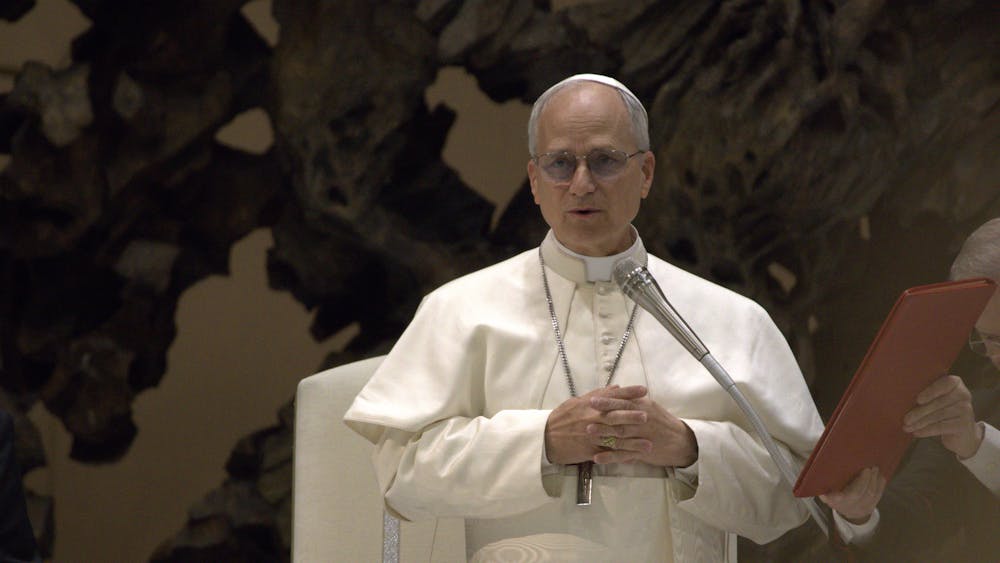Mary Kearney, associate professor of film, television and theatre and director of the gender studies program, explored the prevalence and impact of sparkle in pop culture Saturday, during her lecture titled, “Sparkle: Contemporary Girls Media Culture."
Kearney’s lecture, part of the Snite Musuem of Art "Saturday Scholars Series," examined how elements such as glitter, sparkle and luminescence have become ubiquitous ingirls’ media and how this trend subsequently shapes girls’ production and consumption of media. Her book, "Girls Make Media" highlights the way more girls than ever before, produce various forms of media. Additionally, the book analyzes the presence of sparkle and glitter in media and the connection to a historical fascination with luminescence and sparkle to the ethereal and the heavenly.
“Today, in comparison with other historical periods, girls’ media texts are truly luminous and spectacular,” Kearney said. “I’m interested in the visual style of said media, not only because they contribute so strongly to the overall meaning of text, but also because of their affective dimension and how they make us feel. I’m curious about how these meanings might inspire our further engagement in media culture, especially producing our own media.”
Kearney said while sparkle has been present in pop culture for years in animated films and toys, sparkle has become far more prevalent in television, film and toys marketed towards young girls during the past 15 years, with notable examples including Disney films such as "Frozen" and "Brave," and television shows such as "Hannah Montana." Kearney said while the trend is primarily geared toward young, white girls between the ages of eight and 12, sparkle and glitter have an almost universal appeal among girls of different ages and backgrounds, and this trend encourages girls to “sparkle up to affirm their youthful femininity."
Kearney said, “Those displays have more than just suggestive beauty. They have also signified a particular form of youthful femininity associated with visibility, publicness, wealth, and sexual maturity.”
“The fashion and beauty industries have long encouraged girls to understand female attractiveness as best communicated via sparkly bodily displays, modelled by film stars and other celebrities,” she said.
According to Kearney, sparkle has become synonymous with female youth and beauty, due in large part to the prevalence of glitter and glamour in celebrity culture.
Kearney said there are three forms of “sparkle” in girls media culture: magical — media involving transformative beings such as witches — environmental — primarily concerned with bioluminescence and bright environments — and bodily — associated with how women use sparkle and glitter to adorn their bodies. She said the three forms of sparkle are primarily found in films such as “Cinderella” and “Frozen,” as well as television shows such as “Hannah Montana” and “Sabrina the Teenage Witch.” These kinds of movies and TV shows exemplify in different ways the push for a vibrant, fame-centric ideal of femininity, she said
Kearney said the prominence of sparkle in pop culture contributes to a post-feminist ideal, where female empowerment resides is the responsibility of the individual woman. Operating under this notion, the ideal woman is one who embraces glittery, hyper-feminine products and adornments for her personal pleasure.
“The ideal post-feminist woman, therefore, is one whose femininity and agency are communicated primarily through a visibly self-disciplined and glamorously adorned body.”
While the association of sparkle with a post-feminist ideal at times overemphasizes the importance of beauty and presentation for young girls, she recognized how sparkle can also be an inspiration and encouragement for young girls to create their own media while remaining fascinated by the beauty of sparkle. She said while theorists are often critical of sparkle culture, it is necessary to understand the way young women emotionally engage with sparkle in contemporary media.
“With those perspectives in mind, I want to reclaim femininity, and thus sparkle, as a potentially resistant force for girls,” Kearney said. “In arguing for the potentially positive contributions of sparkle in girls’ media, I also want to encourage attention to its affect or the emotions such luminous beauty elicits.
“ ... I am all for sparkle if that’s what gets girls involved in creating media.”
Read More
Trending









